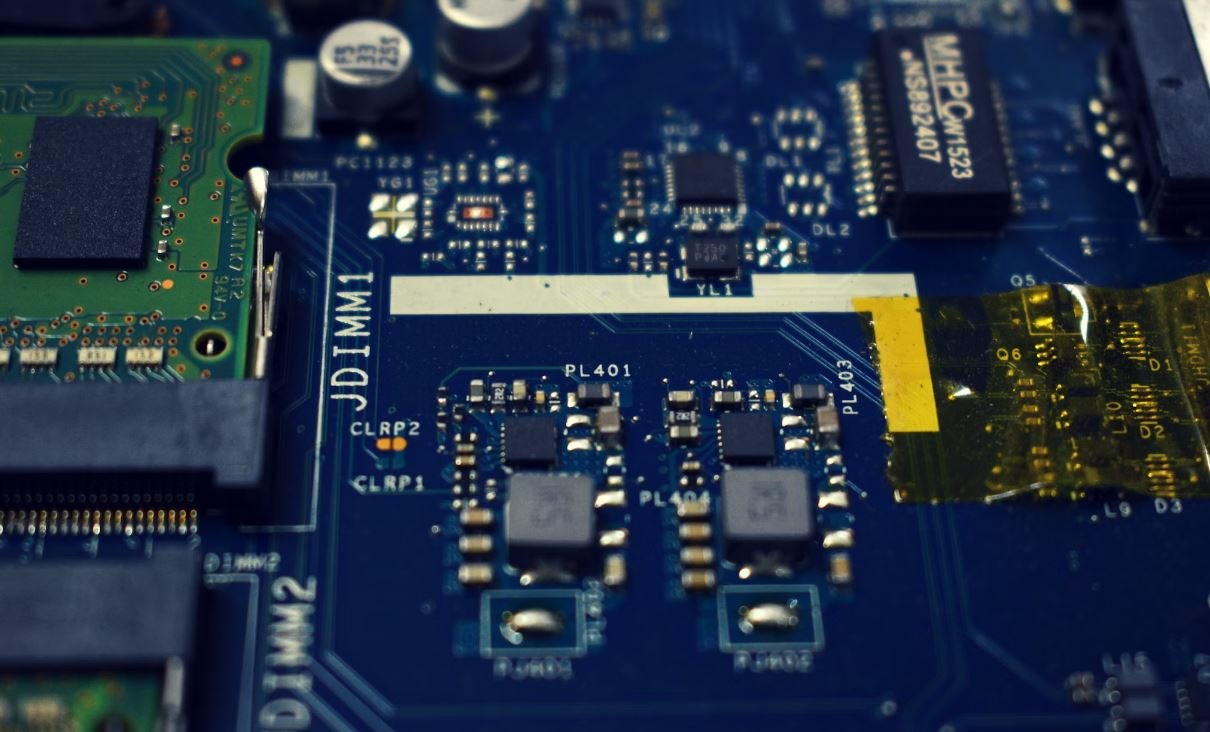Dalle Khursani Plant
The Dalle Khursani plant, scientifically known as Capsicum chinense, is a well-known variety of chili pepper native to the Himalayan region of Nepal, India, and Bhutan. This hot chili pepper is cherished for its distinct fiery flavor, vibrant red color, and exceptional spiciness.
Key Takeaways
- The Dalle Khursani plant is a variety of chili pepper native to the Himalayan region.
- It is known for its fiery flavor, vibrant red color, and exceptional spiciness.
- The plant requires specific growing conditions, soil, and adequate sunlight to thrive.
- Dalle Khursani peppers have various culinary uses and health benefits.
The Dalle Khursani plant grows to a height of about one meter and features elongated, wrinkled, and pointed chili peppers. These peppers measure around 5 to 7 centimeters in length and are approximately 2 centimeters wide. *The unique aspect of Dalle Khursani peppers lies in their scorching pungency combined with a fruity undertone*. They have a heat rating of about 100,000 to 350,000 Scoville Heat Units (SHU), making them one of the hottest chili peppers in the world.
To cultivate thriving Dalle Khursani plants, specific growing conditions must be met. The plant requires a warm climate, well-drained fertile soil, and abundant sunlight. It is recommended to start the seeds indoors and transplant them to the garden once the weather is suitable. Additionally, the plant benefits from regular watering and occasional fertilization to promote healthy growth. *Growing Dalle Khursani plants can be a rewarding experience for chili pepper enthusiasts, as they are visually striking and provide an exhilarating spice*.
Dalle Khursani Plant Care Guide
- Choose a warm and sunny spot in your garden to plant the Dalle Khursani.
- Prepare well-drained soil rich in organic matter for optimal growth.
- Start seeds indoors about 8-10 weeks before the last frost date.
- Transplant the seedlings to the garden when the temperature remains above 15°C (59°F).
- Water regularly, ensuring the soil is moist but not waterlogged.
- Apply a balanced fertilizer sparingly during the growing season.
- Support the plant with stakes or cages to prevent branches from breaking due to heavy fruiting.
- Harvest ripe peppers when they turn bright red. Use gloves when handling to avoid skin irritation.
With its intense heat, the Dalle Khursani pepper is widely used in traditional Nepalese, Indian, and Bhutanese cuisines. It is a popular ingredient in various spicy dishes, pickles, chutneys, and sauces, adding a fiery kick to any recipe. *The unique flavor profile of Dalle Khursani peppers makes them a sought-after ingredient in international cuisine as well*. Apart from its culinary uses, this pepper contains capsaicin, a compound known for its potential health benefits, such as pain relief, improved digestion, and reduced inflammation.
Interesting Facts about Dalle Khursani Peppers
| Cultivar | Scoville Heat Units (SHU) |
|---|---|
| Dalle Khursani | 100,000-350,000 |
| Dalle Khursani Plus | 250,000-400,000 |
| Dig Dalle Khursani | 350,000-450,000 |
| Benefit | Description |
|---|---|
| Pain Relief | The capsaicin in Dalle Khursani peppers can help alleviate pain and inflammation. |
| Boosts Metabolism | Eating spicy foods like Dalle Khursani peppers can increase metabolism and aid weight loss. |
| Improves Digestion | The spiciness stimulates digestion, reduces bloating, and improves nutrient absorption. |
In conclusion, the Dalle Khursani plant is an exciting chili pepper variety known for its distinct spiciness and vibrant red color. It requires specific growing conditions, soil, and sunlight to thrive and can be a visually striking addition to any garden. With its fiery flavor, Dalle Khursani peppers enhance the taste of various foods and offer potential health benefits. *Whether you’re a spice lover or a culinary enthusiast, the Dalle Khursani plant is an excellent choice to add a punch of heat to your cooking*.

Common Misconceptions
Misconception 1: Dalle Khursani plants are easy to grow
One common misconception about Dalle Khursani plants is that they are easy to grow. While these plants are hardy and can tolerate a wide range of growing conditions, they require specific care and attention to thrive.
- Requires well-drained soil to prevent root rot.
- Needs full sun exposure for at least 6 hours a day.
- Regular pruning and fertilization are necessary for optimal growth.
Misconception 2: Dalle Khursani plants are always spicy
Another misconception is that all Dalle Khursani peppers are extremely spicy. While these peppers are known for their heat, the level of spiciness can vary depending on the growing conditions and individual plant genetics.
- The spiciness of peppers can be influenced by factors like temperature and soil quality.
- Some Dalle Khursani varieties may have milder or less intense levels of heat.
- Personal tolerance to spiciness can also affect an individual’s perception of the pepper’s heat.
Misconception 3: Dalle Khursani plants can only be grown in warm climates
Many people believe that Dalle Khursani plants can only be grown in warm climates, but this is not entirely true. While these plants do thrive in warmer regions, they can also be grown in cooler climates with proper care.
- Choose shorter growing season varieties for cooler climates.
- Consider using containers that can be moved indoors during colder months.
- Protect the plants from frost and provide adequate insulation when necessary.
Misconception 4: Dalle Khursani plants do not require regular watering
Some people mistakenly believe that Dalle Khursani plants do not need regular watering. However, proper hydration is important for the health and productivity of these plants.
- Water the plants regularly, allowing the soil to dry slightly between each watering.
- Avoid overwatering, as it can lead to root rot and other diseases.
- Monitor the moisture levels based on the plant’s specific needs and environmental conditions.
Misconception 5: Dalle Khursani plants do not need fertilization
Another common misconception is that Dalle Khursani plants do not require fertilization. While these plants are relatively low maintenance, they can benefit from regular feeding to promote healthy growth and fruit production.
- Use a balanced, slow-release fertilizer to provide essential nutrients.
- Fertilize the plants at the beginning of the growing season and again during the flowering and fruiting stages.
- Follow the manufacturer’s instructions for proper application and dosage.

The Scorching Dalle Khursani Plant
A fiery member of the Capsicum genus, the Dalle Khursani plant (Capsicum frutescens) is a chili pepper variety grown in the mountainous regions of Nepal. Its fruit packs an intense heat that can reach up to 1,000,000 Scoville Heat Units (SHU). Known for its vibrant red color and distinct flavor, this table presents some fascinating facts about this renowned spice.
Historical Significance
Throughout history, the Dalle Khursani plant has played a significant role in Nepalese cuisine and culture. Here are some historical facts:
| Year | Milestone |
|---|---|
| 1880 | First recorded cultivation of Dalle Khursani in Nepal |
| 1950 | Declared as a national heritage crop by the Nepalese government |
| 1998 | Inclusion of Dalle Khursani in the Slow Food Foundation’s Ark of Taste |
Health Benefits
Despite its fiery nature, the Dalle Khursani pepper offers several health benefits due to its unique chemical composition. Let’s take a look at some of them:
| Benefit | Description |
|---|---|
| Pain Relief | Contains capsaicin, which can alleviate pain and reduce inflammation |
| Cardiovascular Health | High in antioxidants that may help lower the risk of heart disease |
| Weight Management | Can increase metabolism and contribute to weight loss |
Culinary Uses
The Dalle Khursani pepper is a staple ingredient in numerous Nepalese dishes due to its distinctive flavor and heat. Here are some popular culinary uses:
| Dish | Description |
|---|---|
| Sekuwa | Skewered and grilled meat marinated in a spicy Dalle Khursani paste |
| Aloo Sadeko | Spicy potato salad featuring chopped Dalle Khursani peppers |
| Choila | Marinated grilled meat, often buffalo, with crushed Dalle Khursani and spices |
Cultivation Facts
Growing Dalle Khursani requires specific environmental conditions and cultivation techniques. Let’s explore some cultivation facts:
| Fact | Description |
|---|---|
| Elevation | Thrives at elevations of 1,500 to 3,000 meters above sea level |
| Soil | Prefers well-drained loamy soil with a pH range of 6.2-7.2 |
| Germination Time | Seeds typically take 15-20 days to germinate |
Global Distribution
While native to Nepal, the Dalle Khursani plant has gained popularity and spread to different regions around the world. Here are some countries where it is cultivated:
| Country | Region |
|---|---|
| Nepal | Hilly and mountainous regions |
| India | Sikkim, Darjeeling, and other northeastern states |
| United States | California, Arizona, and other warm regions |
Record-breaking Peppers
The heat level of Dalle Khursani peppers is a matter of fascination and competition among chili enthusiasts. Here are some record-breaking facts:
| Record | Detail |
|---|---|
| Hottest Dalle Khursani | Measured at 1,000,000 SHU in a recognized chili pepper competition |
| Highest Yielding Plant | A single Dalle Khursani plant produced over 1,000 peppers in a growing season |
| Longest Freshness | A picked Dalle Khursani pepper stayed fresh for 15 days without refrigeration |
Traditional Medicinal Uses
In addition to its culinary applications, the Dalle Khursani plant has been used in traditional Nepalese medicine. Here are some traditional uses:
| Use | Description |
|---|---|
| Liniment | Topical liniment for relieving muscle pain and arthritis |
| Digestive Aid | Consumed to stimulate digestion and alleviate digestive issues |
| Circulatory Tonic | Believed to promote healthy blood circulation when consumed in moderation |
Scoville Heat Units Scale
The Scoville Heat Units (SHU) scale measures the spiciness of chili peppers. Here is how Dalle Khursani compares to other peppers:
| Chili Pepper | Scoville Heat Units (SHU) |
|---|---|
| Jalapeño | 2,500 – 8,000 SHU |
| Habanero | 100,000 – 350,000 SHU |
| Dalle Khursani | 100,000 – 1,000,000 SHU |
From historical significance to culinary uses and impressive records, the Dalle Khursani plant continues to captivate chili lovers and spice enthusiasts worldwide. Its intense heat, versatile applications, and unique flavor make it a cherished ingredient in Nepalese cuisine.
Frequently Asked Questions
What is a Dalle Khursani plant?
A Dalle Khursani plant is a type of chili pepper plant native to Nepal. It is known for its extremely spicy fruit pods, which are commonly used to prepare traditional Nepali dishes.
How tall does a Dalle Khursani plant grow?
A Dalle Khursani plant can grow up to 4-5 feet in height when fully matured.
How long does it take for a Dalle Khursani plant to bear fruits?
It usually takes around 90-110 days for a Dalle Khursani plant to start bearing fruits after sowing the seeds.
How do I sow Dalle Khursani seeds?
To sow Dalle Khursani seeds, choose a well-draining potting mix and sow the seeds around 1/4 inch deep. Keep the soil moist and warm (around 75-85°F) until germination occurs.
What type of soil is suitable for Dalle Khursani plants?
Dalle Khursani plants prefer well-draining soil with a slightly acidic pH level (around 5.5-6.5). Sandy loam or loamy soil enriched with organic matter is ideal.
How often should I water my Dalle Khursani plant?
Water your Dalle Khursani plant regularly, aiming to keep the soil evenly moist. However, be cautious of overwatering as it can lead to root rot. Adjust watering frequency according to the weather and plant’s needs.
When should I fertilize my Dalle Khursani plant?
Apply a balanced fertilizer rich in nitrogen, phosphorus, and potassium to your Dalle Khursani plant just before planting it in the ground or as a topdressing every 3-4 weeks during the growing season.
How do I protect my Dalle Khursani plant from pests and diseases?
To protect your Dalle Khursani plant from pests and diseases, practice good hygiene by removing fallen debris regularly. You can also use organic insecticides or introduce beneficial insects like ladybugs or lacewings to control pests.
When is the right time to harvest Dalle Khursani peppers?
Dalle Khursani peppers are ready to harvest when they have turned bright red and reached their maximum size. Harvest carefully using gardening shears or sharp scissors to avoid damaging the plant.
Can I dry and store Dalle Khursani peppers?
Yes, you can dry and store Dalle Khursani peppers for later use. To dry them, thread a needle with a thread and pierce through the stems of the peppers, then hang them in a well-ventilated area. Once completely dried, store in airtight containers away from moisture and light.




